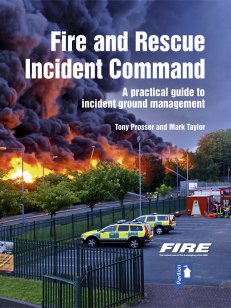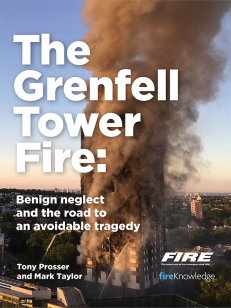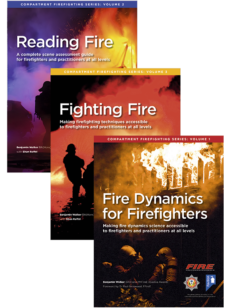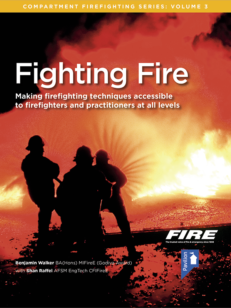Description
Upon arriving at an incident, the pre-planning stage is critical. When overlooked, it can result in tragic situations, but completing a full scene assessment can significantly lower the overall risks. Reading Fire: a complete scene assessment guide for practitioners at all levels links the science of fire dynamics to the information that can be gathered upon arrival at the incident. The book takes the reader step-by-step through each critical area of the ‘BE-SAHF’ model of assessment, from building, construction and environmental factors, to understanding and reading smoke, airflow, heat and flames. It explores each of these in depth, alongside detailed discussions of the ‘clues’ that need to be deciphered before making a diagnosis and formulating an effective tactical plan.
This second volume in the Compartment Firefighting Series, like Fire Dynamics for Firefighters, provides clear and practical advice to practitioners at all levels.
Volume 3, Fighting Fire: Making firefighting techniques accessible to firefighters and practitioners at all levels, considers the practical steps, based upon the information learnt from a scene assessment. You can buy Reading Fire and Fighting Fire together to save 20% here.
Audience
This guide is vital for all frontline firefighters and incident commanders, supporting them in safely dealing with incidents by completing full scene assessments upon arrival.
It is also a valuable resource for those in training.
This self-study guide is a useful tool to support firefighters’ professional development and safety.
Details
ISBN: 9781911028734
Publisher: Pavilion Publishing
Publication: 26 June 2017
Content: Introducing the BE SAHF model
Reading fire step 1: Building and construction
Reading fire step 2: Environmental factors
Reading fire step 3: Smoke factors
Reading fire step 4: Air factors
Reading fire step 5: Heat factors
Reading fire step 6: Flame factors
Be safe, not too late – A visual case study
Authors
Benjamin Walker is an award-winning firefighter, innovative trainer and published author. Benjamin began his career in North East England and has since commanded some of Europe’s busiest fire houses. He has led Compartment Fire Behaviour Training at the London Fire Brigade (UK) Training School – the third biggest Metropolitan Fire Department in the world. Through his charitable work, Benjamin has also delivered firefighter training, created infrastructure and sourced & supplied equipment and resources to Fire Departments in economically deprived areas on three continents.
Shan Raffel has been a firefighter in Brisbane since 1983. In the 1990s, he became a national leader in Compartment Fire Behaviour Training, implementing the first nationally recognised CFBT programme in Australia. Since then, he has worked to apply the techniques and tactics in the real world. He has assisted numerous fire services in Australia in the development of their training facilities and teaching materials, as well as offering training and support to the international firefighting community.






Reviews
There are no reviews yet.